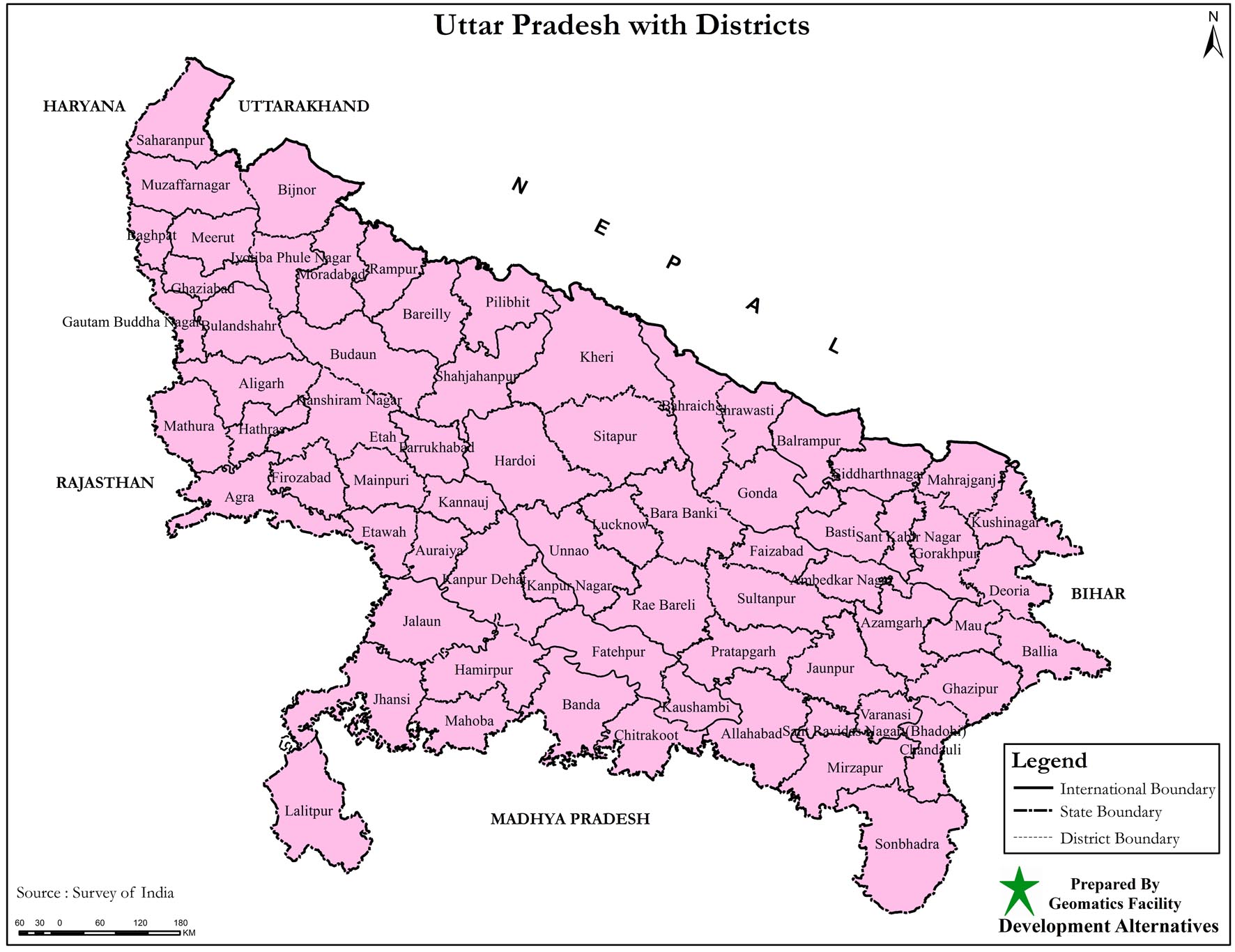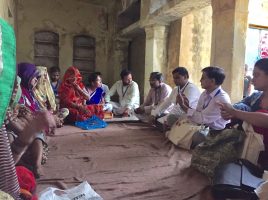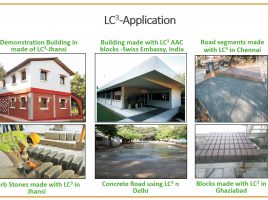People’s Agenda for Uttar Pradesh
With a string of assembly elections scheduled throughout 2017, Indian politics is once again seeing a juggling of ideas, with every policy action bearing significant political and public significance. Social equity and environmental sustainability issues in particularly gained a lot of credence in the agenda of our political parties lately. Hence, this is the perfect time for the people of Uttar Pradesh to put forward their demands for a new development paradigm which will help the state transition towards new sustainable, fair and inclusive economies.
This transition will require change across five action areas each of which interlink and reinforce each other.
These are:
- Better management of natural systems, which reflects our dependency on nature in our economic activities and translates environmental values, scarcities and risks into policy thinking. It is important to realise that upholding environmental stability is in our longer-term interests and that ultimately people and environment share a complementary and interdependent relationship. For instance, we are dependent on environment for our critical livelihoods and procurement of a wide range of ecosystem services, such as “provisioning of services such as food and water; regulating services such as flood and disease control; cultural services such as spiritual, recreational, and cultural benefits; and supporting services, such as nutrient cycling, that maintain the conditions for life on Earth” (WWF India 2014).
- Investing in people, with a focus on equity, justice, parity and basic needs fulfillment. A new, sustainable economy should focus on redistribution of our natural and financial capital to create more resilient and inclusive economies. This is especially critical. According to a Livemint report, only 1% Indians own 58% of national wealth (Manku 2016). In Uttar Pradesh (UP), the situation is no better, with the state housing the largest number of India’s poor. One of the critical ways to contribute to a better present and future of our populations and facilitate investing in people is to develop alternate ownership models in sectors such as MSMEs, Self Help Groups and skill-based entrepreneurship sectors.
- Greening high impact sectors by changing the production systems that use people and nature as inputs and impact them by their outputs. This involves utilising the opportunities in exemplary sectors that have the greatest spill-overs – the sectors that produce the largest amount of waste or are amongst the most resource-intensive, such as food, waste management, industry and housing. In the Indian context, in a state like UP, high impact sectors are agriculture, manufacturing, power, transport and tourism. Transformation of these sectors to operate in an optimal and resource-efficient manner can considerably benefit both – the people and the economy in the long-run.
- Influencing financial flows and an equitable financial system, by providing an impetus to small banks, making transaction systems transparent, and long-term financial planning (15, instead of 5 year plans) as well as incentivising flows towards green and sustainable enterprises. These are imperative for economic sustainability and stability, necessitating instilling confidence in the financial sector by putting in place incentives to re-orient investments in more sustainable products. In India, for instance, the field for this is particularly ripe, since the Indian financial landscape known for its stability and encouraging retail banking is now also being characterised by a shift towards rigorous policies of technologically-driven financial inclusion.
- Measuring what matters by redefining our understanding of progress as going beyond GDP and profits. A recent example would include measures like the Genuine Progress Index (GPI), which is annually reported by Maryland and Vermont in United States. It looks at whether or not economic progress results in sustainable prosperity (Kubiszewiski 2014). In India, a push towards such a system was already given by the Indian government in 2009 in form of an idea of Green GDP (Financial Express 2009), but there is a need to revive the debate around it, taking concrete examples from countries like Ethiopia where such measures have been operationalised in the form of a “Green Economy” (Global Green Growth Institute n.d.).
Given the immense potential offered by the existing economic system in India and in states like UP, there is a need to delineate a coherent unifying framework for taking the issue of a sustainable economic transition to the people.
People’s Agenda for Development
People’s Agenda for Development becomes is a powerful way of tangibilising the action points required for this transition.
Translating these issues into politics requires recognising the spheres of environment and development as a domain where people can express their claims and rights over issues of justice and equity. It also requires focusing on specific social groups which may be more vulnerable to environmental hazards and access to basic amenities than others. This is especially the case in a state like UP, which has recorded the highest number of SC/ST atrocities, a rise in crime against women, with a crime rate of 12.7% crimes committed in India, and a poor sex ratio of 912 women per 1000 men (Khosla 2017).
But most importantly it requires viewing economic development as a means to achieve better social and environmental outcomes rather an objective in itself. On the economic front, UP has some major strengths like a rising consumer base, a thriving MSME sector, rapid urbanisation and a rising young workforce. These strengths need to be utilised to contribute to better economic growth outcomes, as contributions from people-intensive sectors such as these will aid the transition towards a more sustainable economy. This coheres well with the projected economic growth scenario for UP. According to a report by PTI, “the state has started outperforming the country on various parameters including economic growth, infrastructure development, industry, services sector rise and labour productivity and could achieve double digit growth rate of over 10 per cent by financial year 2016-17.” (PTI 2015).
Given this state of development, the question is how can people’s agenda show the way forward?
In UP, the key areas of contestations are:
- Preservation of critical natural resources
- People’s livelihoods
- Environmental management issues: Municipal Solid Waste management, cleaning Ganga, thermal plant emissions
Given the lags in these areas, there is a clear case for a series of socio-economic and environmental demands that need to be highlighted in people’s agenda for development for Uttar Pradesh.
These, broadly, include:
- Agriculture policies must focus on efficiency in production solutions, value addition and market linkages for doubling incomes of small farmers by 2022.
- Greening and developing MSMEs clusters, that have organically evolved in the state must be the key to UP’s manufacturing policy. It is a strong enabler to local livelihoods.
- Every person in Uttar Pradesh must have access to basic housing & adequate infrastructure that is green, affordable and sustainable must be developed to increase the accessibility of people to public services.
- Local Panchayat Institutions must be strengthened and decentralised district planning must be at the core of governance and state planning processes.
- Conservation and optimal management of water and land systems, with the aim of securing adequate livelihoods for people, checking land degradation and soil erosion and preventing groundwater exploitation.
The key to achieving these lies not just in technocratic top-down solutions, but also institutionalising a framework for strong laws, people’s participation and policies that are viable on the ground.
Garima Maheshwari
gmaheshwari@devalt.org
The views expressed in the article are those of the author’s and not necessarily those of Development Alternatives.
_______________________
References:
Bibliography
Financial Express. 2009. Financial Express. November 21. Accessed January 18, 2017. http://www.financialexpress.com/archive/india-to-release-green-gdp-data-from-2015/544338/.
Global Green Growth Institute. n.d. Accessed January 23, 2017. http://gggi.org/government-ethiopia-announces-climate-resilient-green-economy-strategy/.
IndiaSpend. 2016. IndiaSpend. April 14. Accessed January 17, 2017. http://www.indiaspend.com/cover-story/india-leads-world-in-environmental-conflicts-10655.
Khosla, Sadhavi. 2017. Janta ka Reporter. January 6. Accessed January 6, 2017. http://www.jantakareporter.com/blog/uttar-pradesh-education-health-sectors-shambles-criminality-plentiful-lawlessness-rife/91748/.
Kubiszewiski, Ida. 2014. The Conversation. December 2. Accessed January 17, 2017.
Manku, Moyna. 2016. Livemint. January 16. Accessed January 16, 2016. http://www.livemint.com/Politics/E3n5ANHQL1ywMOdNxm6igK/Indias-1-superrich-own-58-of-the-countrys-total-wealth.html.
PTI. 2015. The Financial Express. February 16. Accessed January 23, 2017. http://www.financialexpress.com/economy/uttar-pradesh-likely-to-achieve-10-growth-in-fy17-assocham/43521/.
World Bank. 2016. World Bank. May 20. Accessed January 16, 2016. http://documents.worldbank.org/curated/en/187721467995647501/Uttar-pradesh-Poverty-growth-and-inequality.
WWF India. 2014. WWF India. July 15. Accessed January 23, 2017. http://www.wwfindia.org/?11621/National-Workshop-to-Assess-the-Ecosystem-Services-for-River-Ganga.







Leave a Reply